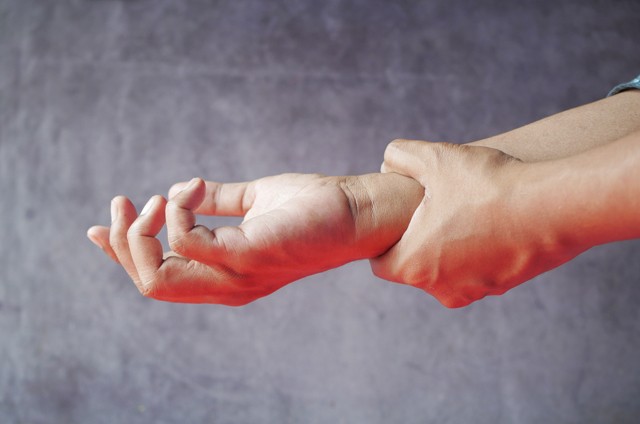How to Differentiate between Muscle Sprain and Strain
The terms ‘strain’ and ‘sprain’ are often used interchangeably to describe the overstretching of soft tissues near your joints. However, there are key differences between these two types of injuries. Strains affect the tendons and sprains affect the ligaments. One isn’t necessarily worse than the other, as each injury has different levels of severity.
Let’s learn more about strains and sprains so that you can tell what you’re dealing with and the best treatment options going forward.
Strain vs. Sprain
A joint strain is the overstretching or tearing of muscles or tendons. Tendons are fibrous connective tissues that attach muscle to bone. Strains are most common in the lower back and hamstrings.
A joint sprain is the overstretching or tearing of ligaments. Ligaments are the bands of tissue that connect two bones together. The most common places to get a sprain are in the ankle and wrist.
Both strains and sprains have similar symptoms, which is why people get them confused. Common symptoms of strains are pain, swelling, limited flexibility, difficulty using the joint and muscle spasms. For sprains, symptoms include pain, swelling, bruising, limited flexibility and trouble using the joint.
How to Tell What You’re Dealing With
Mild strains and sprains can be treated at home with the RICE method: Rest, Ice, Compression and Elevation. So, whether you have a strain or a sprain, you can treat it in the same way, as long as it’s not serious. You should be able to return to limited activities in two to three days.
However, severe strains and sprains may need more time to heal, as well as physical therapy to increase flexibility and range of motion. If you’re still having trouble after two weeks, contact a pain management specialist to check things out. It’s possible that you may be dealing with something other than a strain or sprain.
Here are some of the ways that you can differentiate between a muscle strain or sprain:
- Bruising. If you have bruising around the affected joint, it’s probably a sprain. Strains do not cause bruising.
- Muscle spasms. If you are experiencing muscle spasms, you probably have a strain. Because strains affect the muscles, it’s not uncommon to have muscle pain, fatigue and overuse.
- Healing time. Muscle strains don’t involve tearing and typically heal quickly within a few weeks. Sprains, on the other hand, often result from tearing. Therefore, they take longer to heal, usually 4 to 6 weeks.
Treating Strains and Sprains
Treating both strains and sprains follow the same principles. If you suddenly feel your ankle pop or back hurting, stop what you’re doing. The first 48 to 72 hours are crucial to the recovery process. Practice the RICE method and restrict activity for a few days to reduce pain and swelling and promote a healthy recovery.
The severity of your strain or sprain will dictate how long you have to wait before you can start working out or playing sports again. Mild strains and sprains typically only need a few days to heal, but severe ones can take much longer. And, it’s possible that you’ll need other treatments such as physical therapy or surgery.
Still in Pain? See a Pain Management Specialist
If you recently suffered a strain or sprain and you’re not getting better, schedule an appointment with Jersey Rehab. You may need a different treatment plan, or you may be dealing with something else. Our pain management specialists will identify the root cause of your problem and provide pain relief.

